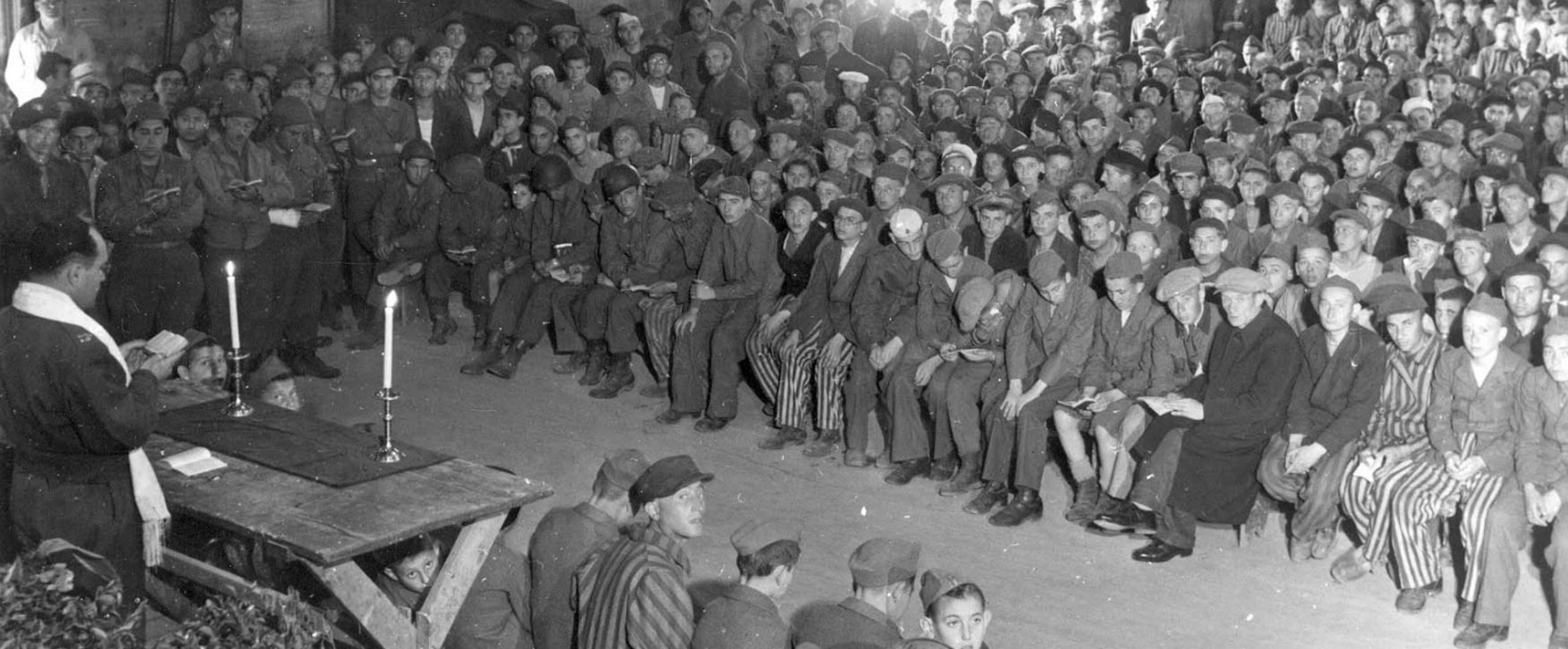June 18, 2024|י"ב סיון ה' אלפים תשפ"ד Naso 5784 - The Elevated Life
Print ArticleThe Elevated Life
My first year in college and learning in Yeshiva University, I ran into a difficult patch. It was a difficult schedule, going to college and also spending many hours per day learning in yeshiva, and I started to question spending so much of my time learning. So, I called one of my rebbeim, Rav Ezra Shapiro.
And Rav Ezra offered me an incredible piece of advice:
He said, “I want you to write yourself a letter, and in it I want you to
describe WHY you have committed yourself to learning Torah.”
I felt nervous about it:
- What if I didn’t come up with any good ideas?
- What if I convinced myself I should walk away from yeshiva?
But Rav Ezra told me to do it, and I trusted him, so I did it. It took me some time, and I continued to work on this challenge, but over time my commitment grew and grew. And I found that the more I articulated WHY I had committed myself to this life, the more I was able to stay the course.
After the very long description of each and every korban that was brought by each and every Nasi at the Chanukas HaMizbeach, the inauguration of the altar in the Mishkan, the Torah gives us a SUMMARY of all that was brought:
(פד) זֹאת חֲנֻכַּת הַמִּזְבֵּחַ בְּיוֹם הִמָּשַׁח אֹתוֹ מֵאֵת נְשִׂיאֵי יִשְׂרָאֵל [קַעֲרֹת כֶּסֶף שְׁתֵּים עֶשְׂרֵה מִזְרְקֵי כֶסֶף שְׁנֵים עָשָׂר כַּפּוֹת זָהָב שְׁתֵּים עֶשְׂרֵה:]
This was the inauguration of the altar on the day it was anointed by all of the heads of the tribes of Israel…
And it gives us a full breakdown of the number of items brought.
And then, at the conclusion of the breakdown, it closes with a similar, but DIFFERENT phrase than how it began:
](פח) וְכֹל בְּקַר זֶבַח הַשְּׁלָמִים עֶשְׂרִים וְאַרְבָּעָה פָּרִים אֵילִם שִׁשִּׁים עַתֻּדִים שִׁשִּׁים כְּבָשִׂים בְּנֵי שָׁנָה שִׁשִּׁים[ זֹאת חֲנֻכַּת הַמִּזְבֵּחַ אַחֲרֵי הִמָּשַׁח אֹתוֹ:
This is all within just 4 pesukim, and the Torah BEGINS by saying this is the Chanukas HaMizbeach B’YOM on the DAY of it’s anointing. And then concludes with the same words, “ACHAREI Himashach Oso” AFTER it was anointed.
And we often just gloss over this detail because, after all, it’s been a long parsha. But also because it’s all just a wrap up anyhow.
But it then begs the question: Why the change of the language from TODAY, to AFTER?!
Rashi notes this challenge, and he argues that the Torah is emphasizing that TWO THINGS ARE TRUE:
1) There was an ANNOINTING of the Mizbeach, oil was poured over it. And there was ALSO an INAUGURATION of the Mizbeach, as the nesiim brought their korbanos. They both happened BAYOM, on the SAME DAY.
2) However, the second pasuk comes to teach me that there was an ORDER. FIRST there was an anointing and THEN, ACHAREI HIMASHACH OSO, after the anointing the nesiim brought their korbanos, the inauguration.
Imrei Emes (Rav Avraham Mordechai Alter) writes that there is ALSO a deeper message here as well:
We know well that moments of inspiration can be extraordinarily powerful, but they can also be fleeting. It is true in TANACH, and it is true in our lives. These moments can be clarifying, they can help us remember what we really want from our lives and how we would like to be more focused on the things that really matter to us.
However, unless we find a way to HARNESS those moments and concretize those feelings, the inspiration fades and the opportunity is lost.
The Chanukas HaMizbeach was one of those moments. Bnei Yisrael had been exhilarated at Har Sinai. They spoke to HKBH PANIM EL PANIM, literally FACE-TO-FACE!
And yet, after only 40 days they sank back down and committed the grave sin of the Egel HaZahav, the Golden Calf.
They quickly realize their mistake, and a teshuva process begins immediately, and culminates with Moshe coming back down the mountain with the second luchos, and with a new project: The MISHKAN.
The Mishkan, according to many rishonim, becomes the tikun, the way Bnei Yisrael could shore up the mistake of the Egel HaZahav, as Bnei Yisrael follows through on Hashem’s EXACT SPECIFICATIONS, each detail done “Kaasher Tziva Hashem”, and it represents Hashem’s willingness to come back and bring His presence back to us.
The dedication of the Mishkan, then, was a culmination of months of progress, as Bnei Yisrael REHABILITATED THEMSELVES, ready to remain steadfastly committed to Hashem and His mitzvos.
They were now ready to make a plan, to concretize their inspiration into a daily routine, with an Avoda each and every day.
So, at that NEW MOMENT OF REVELATION, at the INAUGURATION of the Mishkan, as Bnei Yisrael stand on the precipice of RENEWING their relationship with Hashem, they are REMINDED ONCE MORE not to allow themselves to get caught up in the excitement of that moment alone, but to prepare for a more consistent, daily commitment.
And so, HKBH reminds them at the end of the process:
Zos Chanukas HaMizbeach B’YOM HIMASHACH OSO, the extraordinary commitment shown by the nesiim with all their gifts, the pomp and circumstance, was all done on that VERY DAY.
But then, HKBH reminds Klal Yisrael that just as that excitement and commitment was going to be there B’YOM Himashach Oso, on that day, they would also need to prepare to have that commitment ready ACHAREI HIMASHACH OSO. Even on THE DAY AFTER.
But that’s a tall order! It’s hard enough to find ourselves in a position to even have those inspiring moments. What are we supposed to do to make sure those moments become concretized into a more consistent routine?
At the very beginning of the parsha, in reference to the count of the Bnei Levi, the Torah refers to the work they will do as follows:
(מז) מִבֶּן שְׁלֹשִׁים שָׁנָה וָמַעְלָה וְעַד בֶּן חֲמִשִּׁים שָׁנָה כָּל הַבָּא לַעֲבֹד עֲבֹדַת עֲבֹדָה וַעֲבֹדַת מַשָּׂא בְּאֹהֶל מוֹעֵד:
From the age of 30 and up until 50. All those who come to do Avodas Avoda and Avodas Masa…
Which literally refers to either the regular Avoda in the Mishkan or the Avoda of carrying the different items as we would travel.
However, the Beis Aharon, Rav Aharon MiKarlin offers a pretty explanation of these TWO TYPES OF AVODA within our lives:
- Sometimes our Avodas Hashem can become Avodas Avoda: Work for the sake of working. We know what we have to do and so we check off the list. It’s not ideal, but it happens at times.
- Other times, though, our Avodas Hashem becomes Avodas Masa: Work that is ELEVATED. I understand what my goals are in Avodas Hashem, and I appreciate that the opportunity to be a Jew, a person who is literally an OVEID HASHEM, someone who works for HKBH, ELEVATES MY LIFE. It’s Avoda for a Purpose.
And I believe that if we want to live a life of not only B’Yom Himashach Oso but also ACHAREI Himashach oso. If we want the inspiration of big moments to have a lasting impact, we need to start figuring out how to make my Avodas Hashem an Avodas Masa.
And we do that when we remind ourselves WHY we do all that we do. When we can articulate why we have dedicated our entire lives to living a Torah life, then we can find the strength to remain committed even when it doesn’t feel as inspiring.
Yes, we don’t do this too often either because it makes us nervous to uncover the real answers, or because of what a decision to be more committed would mean for our lives practically.
But when we can articulate the VALUE of the real sacrifice this life is, and see how it ELEVATES US in so many ways, then we will feel we are involved NOT in an Avodas Avoda, but in an Avodas Masa.
On the very day of the Chanukas HaMizbeach, HKBH wanted us to be prepared not only for THAT DAY, but for EVERY DAY. And when we can define for ourselves what gives us an AVODAS MASA, then our Avodas Hashem will not be Avoda for Avoda’s-sake. It will become a labor of love that is truly ELEVATED.




